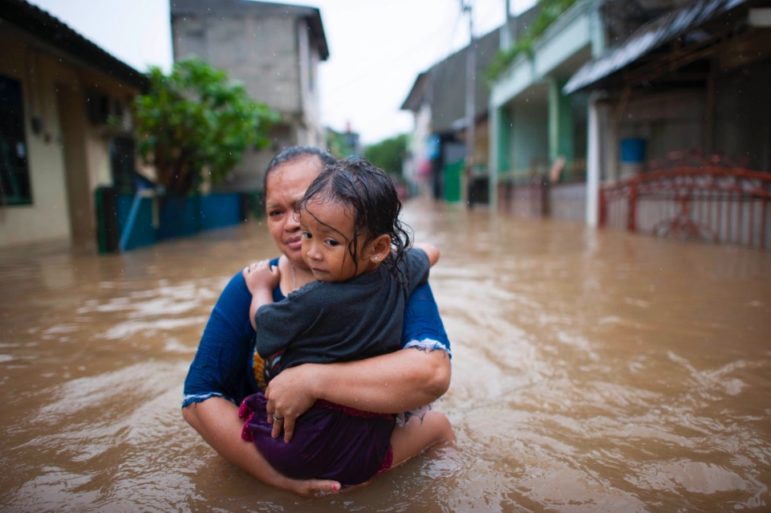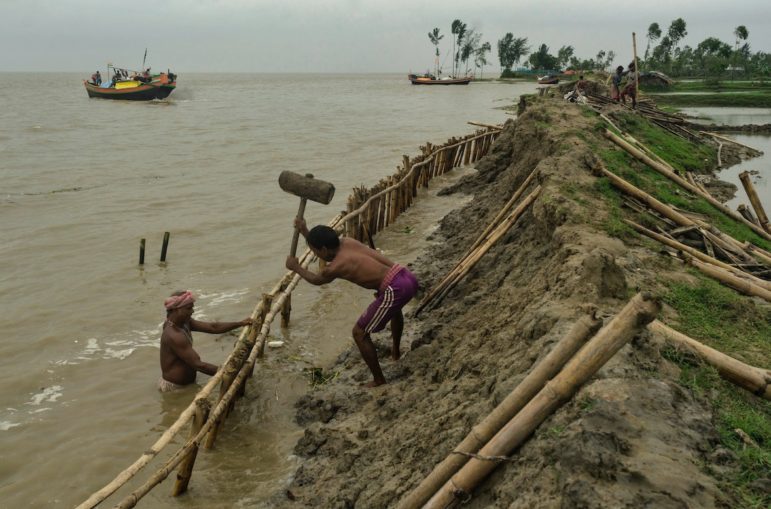

GIJN’s Guide to Investigating Sea Level Rise: Chapter One — Key Questions
Read this article in
Guide Resource
GIJN’s Guide to Investigating Sea Level Rise
Chapter Guide Resource
GIJN’s Guide to Investigating Sea Level Rise: Chapter One — Key Questions
Chapter Guide Resource
GIJN’s Guide to Investigating Sea Level Rise: Chapter Two – Understanding Rising Sea Levels
Chapter Guide Resource
GIJN’s Guide to Investigating Sea Level Rise: Chapter Three — Maps and Data
Chapter Guide Resource
GIJN’s Guide to Investigating Sea Level Rise: Chapter Four — Story Tips and Best Practices
Chapter Guide Resource
GIJN’s Guide to Investigating Sea Level Rise: Chapter Five — Visualizing Rising Oceans
Chapter Guide Resource
GIJN’s Guide to Investigating Sea Level Rise: Chapter Six — Notable Investigations
Sea levels are rising because of global warming. The scientific evidence at this point is indisputable, and the consequences are likely severe. Much of humanity lives along coastlines, where even small changes in sea levels can result in record flooding, loss of communities, forced human migration, and damage to fishing and agriculture.
To what levels the seas rise will depend on human activity, but serious negative consequences are evident already.
For journalists, explaining the causes and consequences of rising sea levels is a critical and challenging assignment. There are many stories that can be told through the eyes of those already being affected.
Examining the Likely Impact
To get a sense of what the key stories about sea level rise are, it’s important to first gain a basic understanding of how rising oceans and increased coastal flooding will matter across a number of communities and industries. The potential impact cuts across a number of different beats and subject areas, and encompasses a vast amount of humanity and livelihoods. These categories provide a handy lens through which investigative reporters can structure their stories:

The soft sedimentary rock of the cliffs in Norfolk, UK, has experienced fast coastal erosion. Credit: Martin/Flickr/Climate Visuals
- Impacts on coastal communities
- Increased migration, both within countries and across borders
- Differential effects on the poor, women, children, and the vulnerable
- Negative effects on farming and fishing
- Loss of wildlife habitats
- Impacts on businesses
- Real estate values (rising and falling)
- Loss of affordable housing
- Effects on roads and transportation infrastructure
- Inundation of low-lying public facilities, such as water treatment plants
- Historic and iconic places at risk
- Rising insurance costs
- Adaptation: What’s to be done?
Key Questions to Ask
Once investigative journalists begin to understand these varying impacts, then it becomes imperative to examine the accountability aspect of the story. This can involve looking at the industries and governments — and in particular, their corresponding behaviors and policies — that are fueling climate change-driven sea level rise. In addition, it’s worth exploring how these same entities are ignoring, underestimating, or otherwise failing to address the very real consequences of rising oceans and greater flooding. This can often be boiled down to a small number of key questions:
- Are governments paying attention to the data?
- Are officials looking at future consequences?
- What mitigation and adaptation strategies are being considered?
- Are officials paying attention to equity issues?
In this comprehensive guide, GIJN leads investigative journalists through the reporting process on sea level rise. This begins with understanding the current scientific research, finding the best sources of maps and data, best practices for producing stories, tips for visualizing the threat of sea level rise, and, finally, a wealth of case studies and previous investigations that could be used as models for your own reporting. At the same time, we recognize that sea level rise is an evolving phenomenon and that new techniques, tools, and narratives are constantly being adapted to cover it, so we welcome your feedback. Let us know what we’ve missed and how we can do better.















